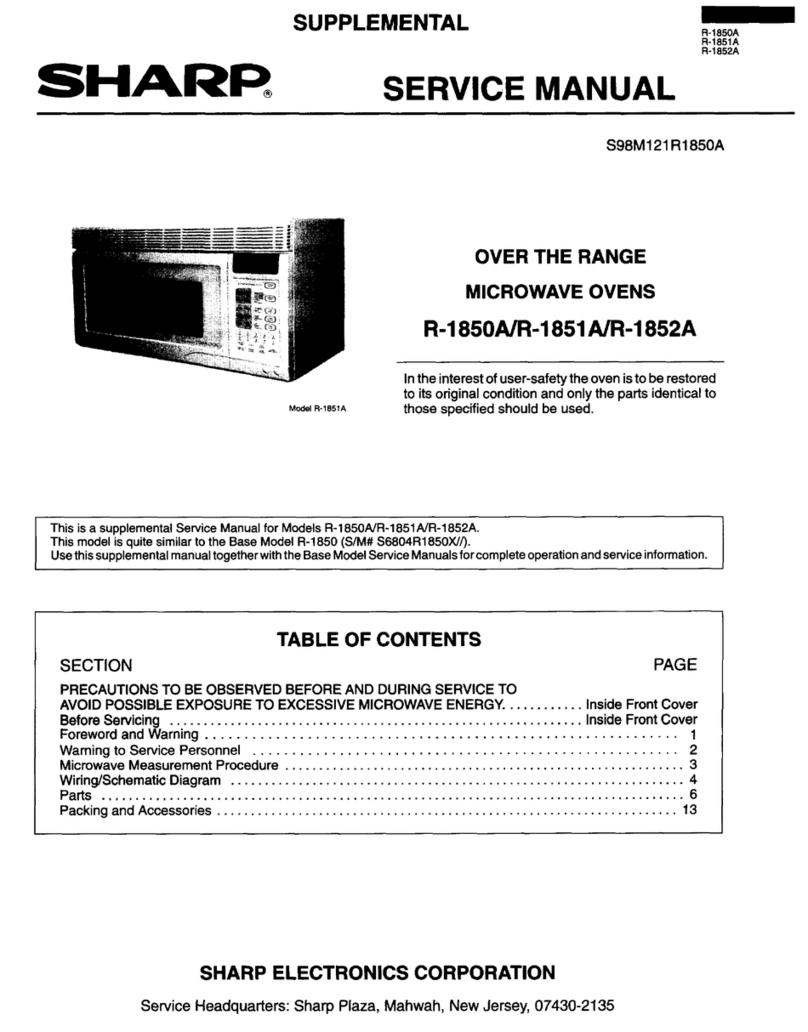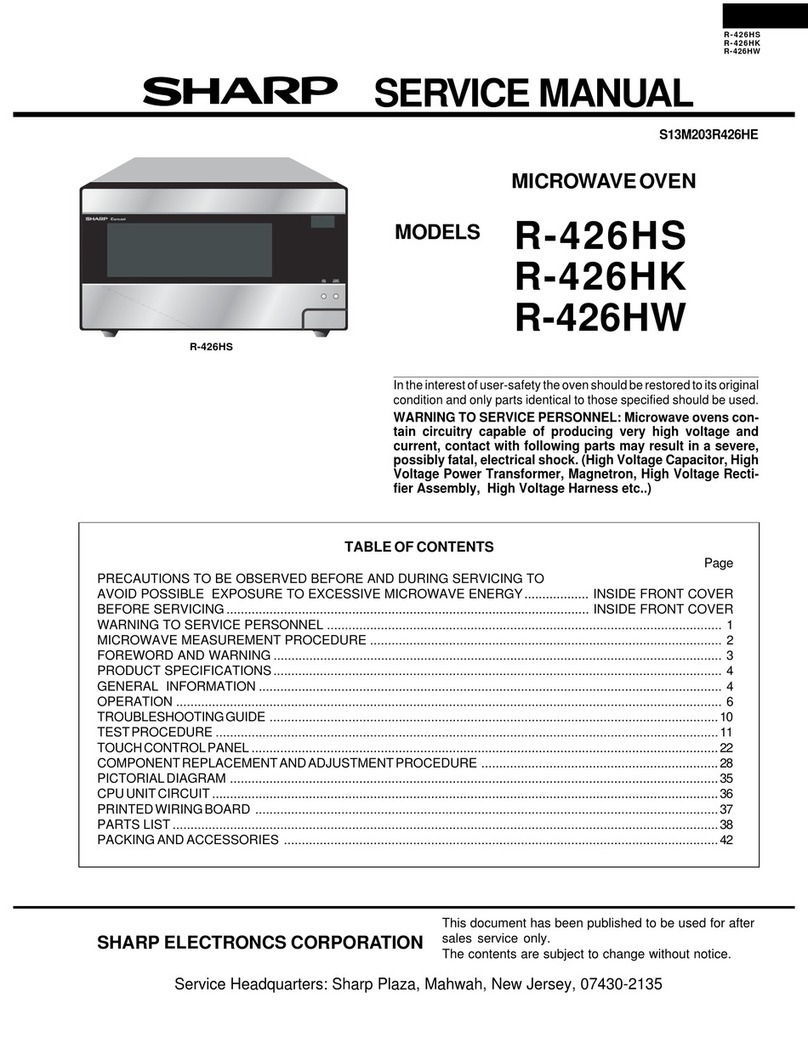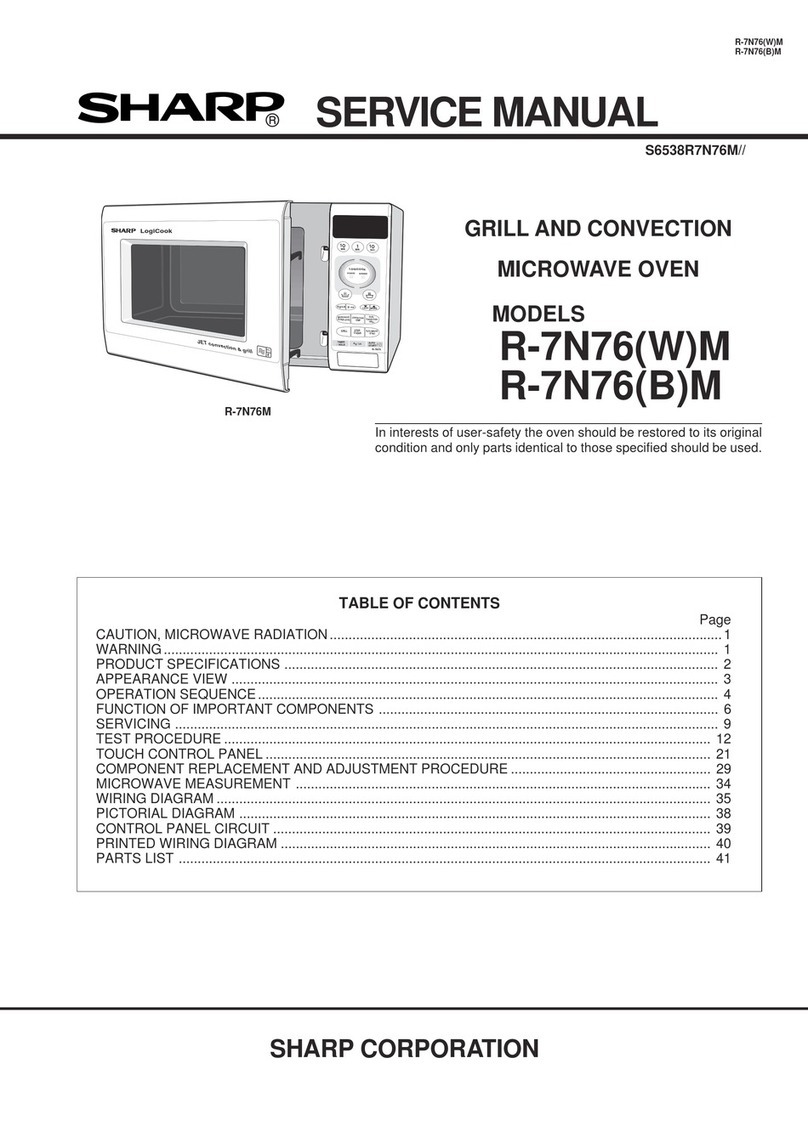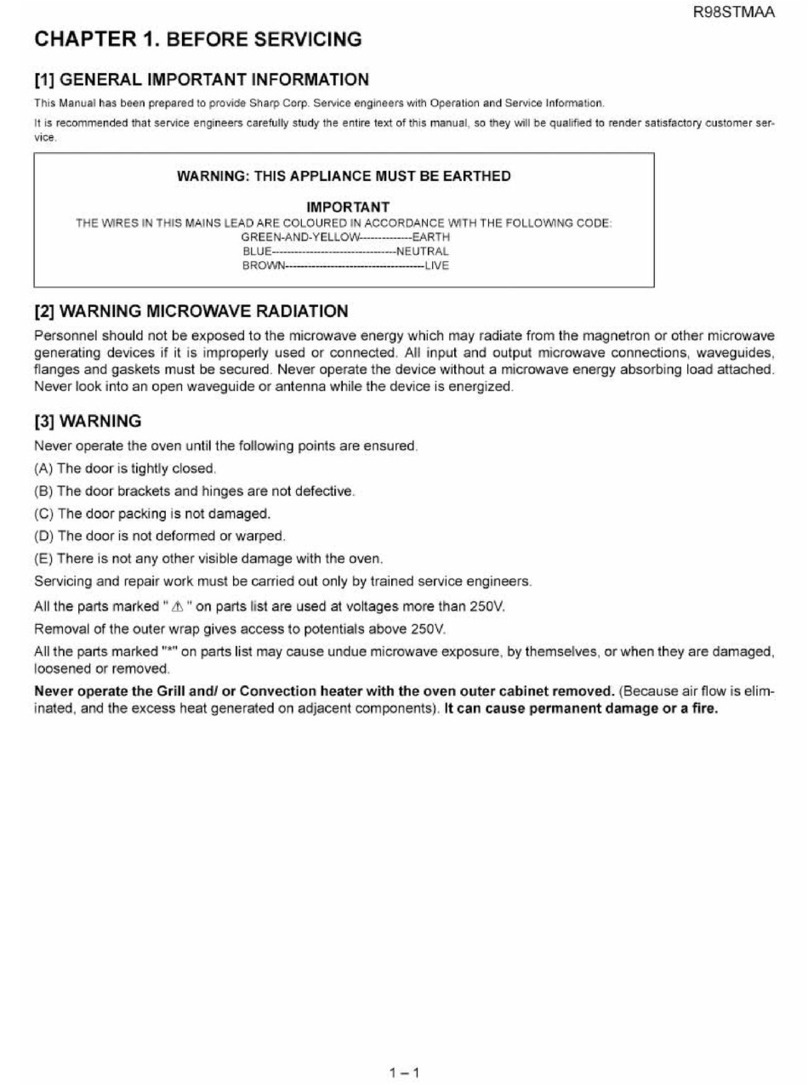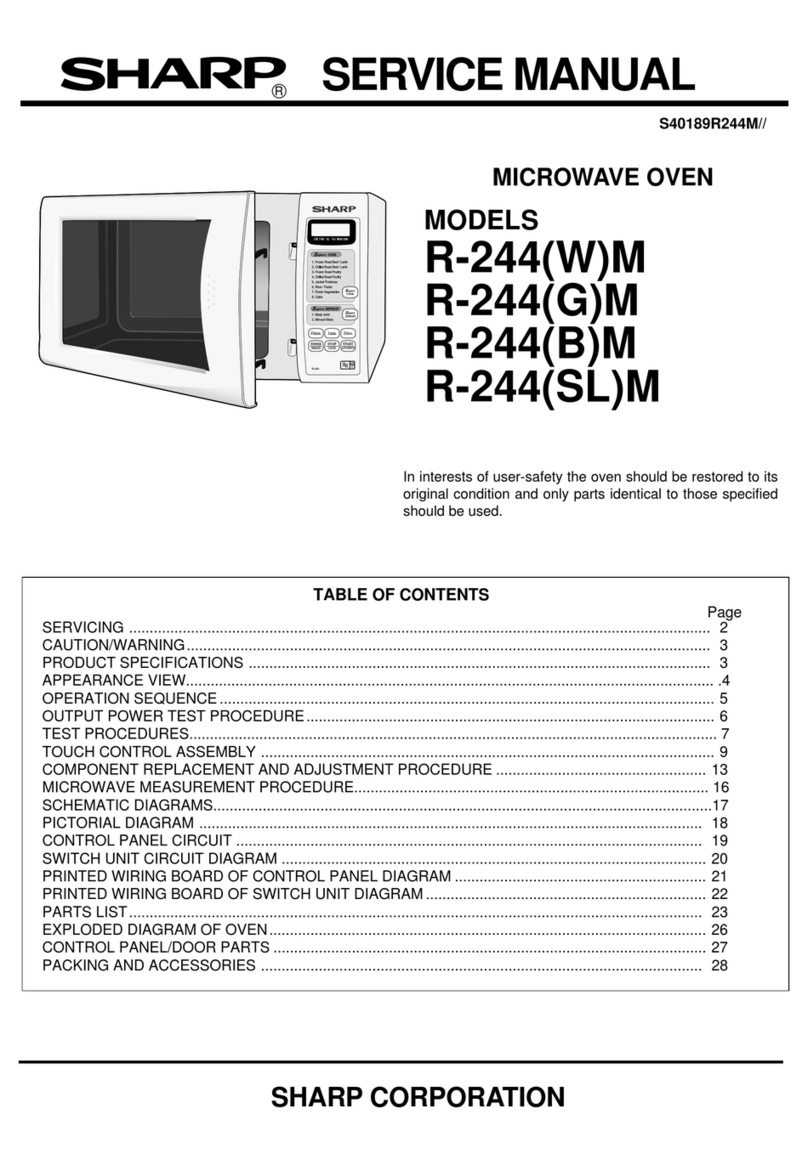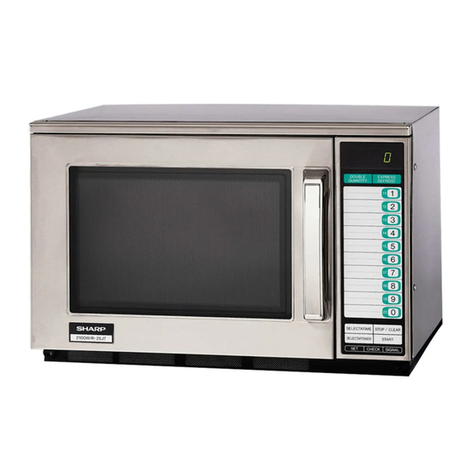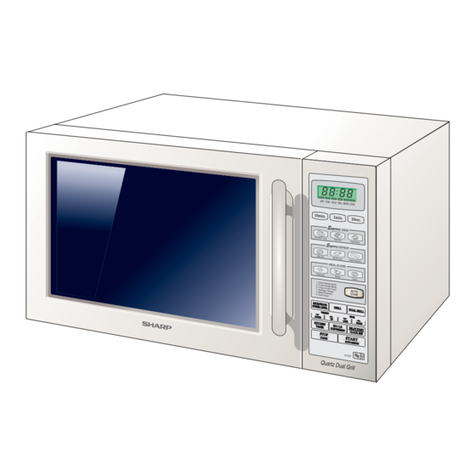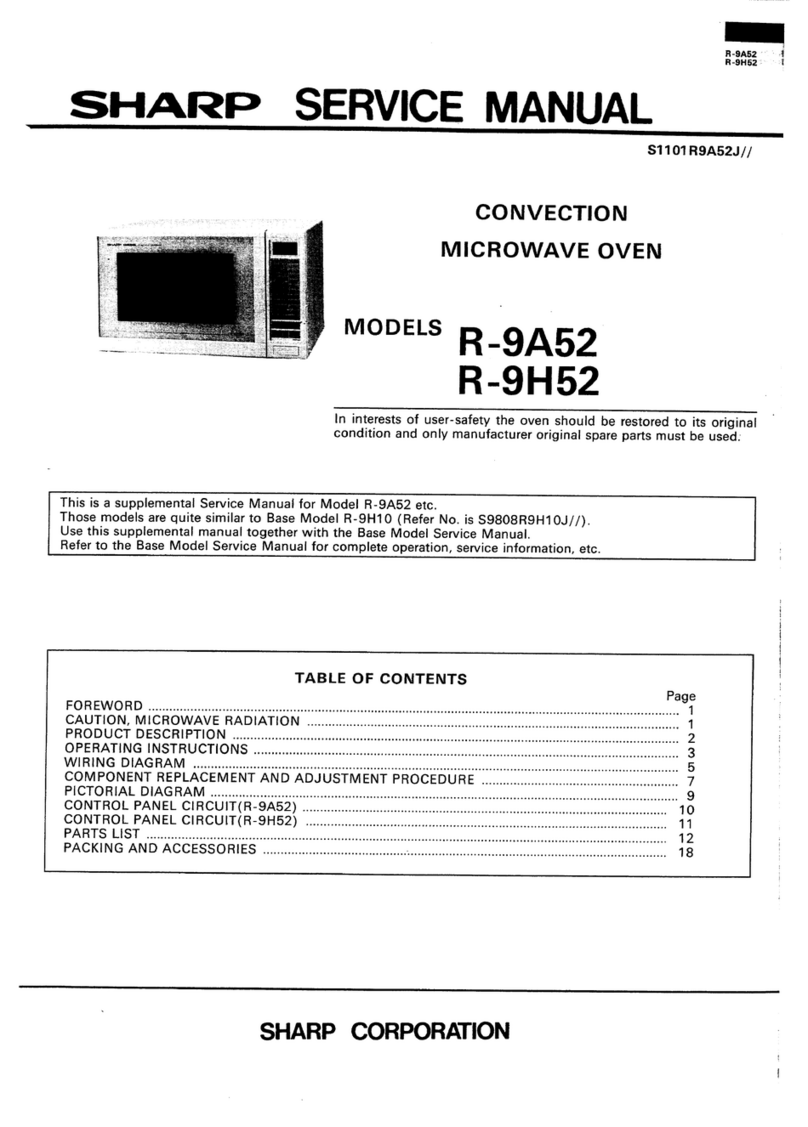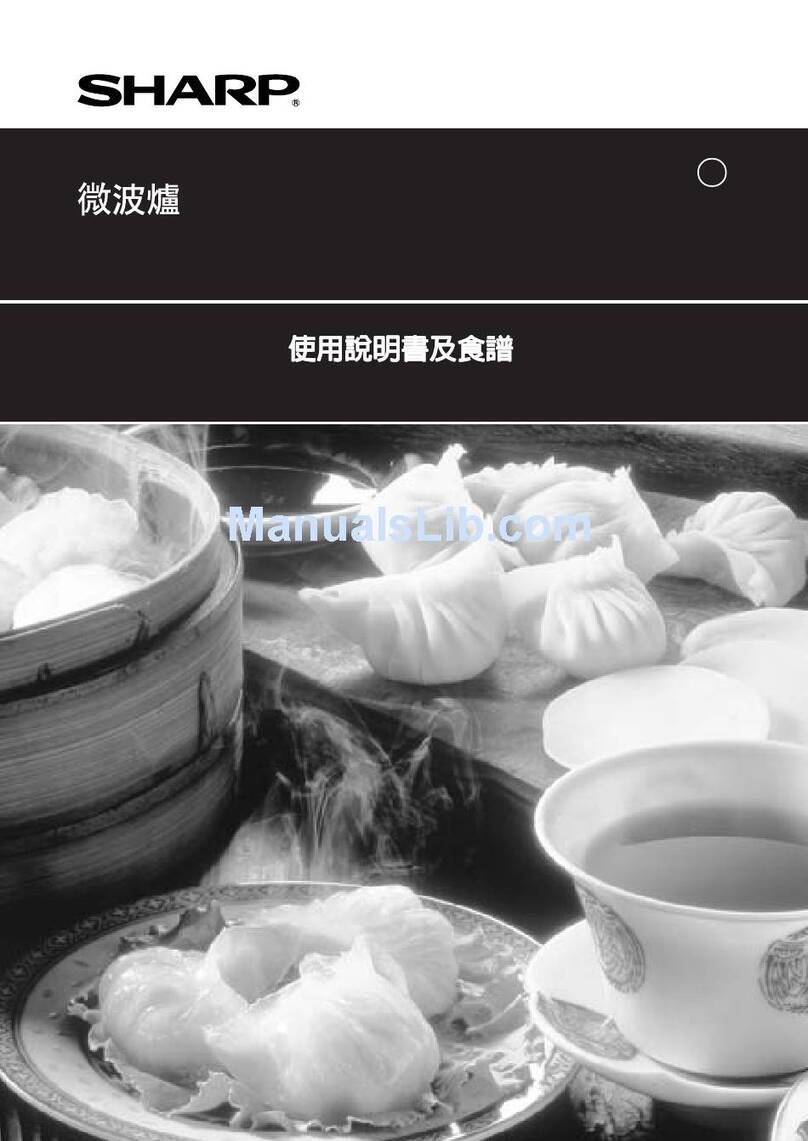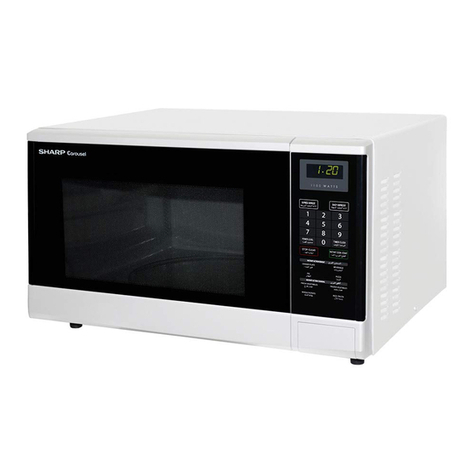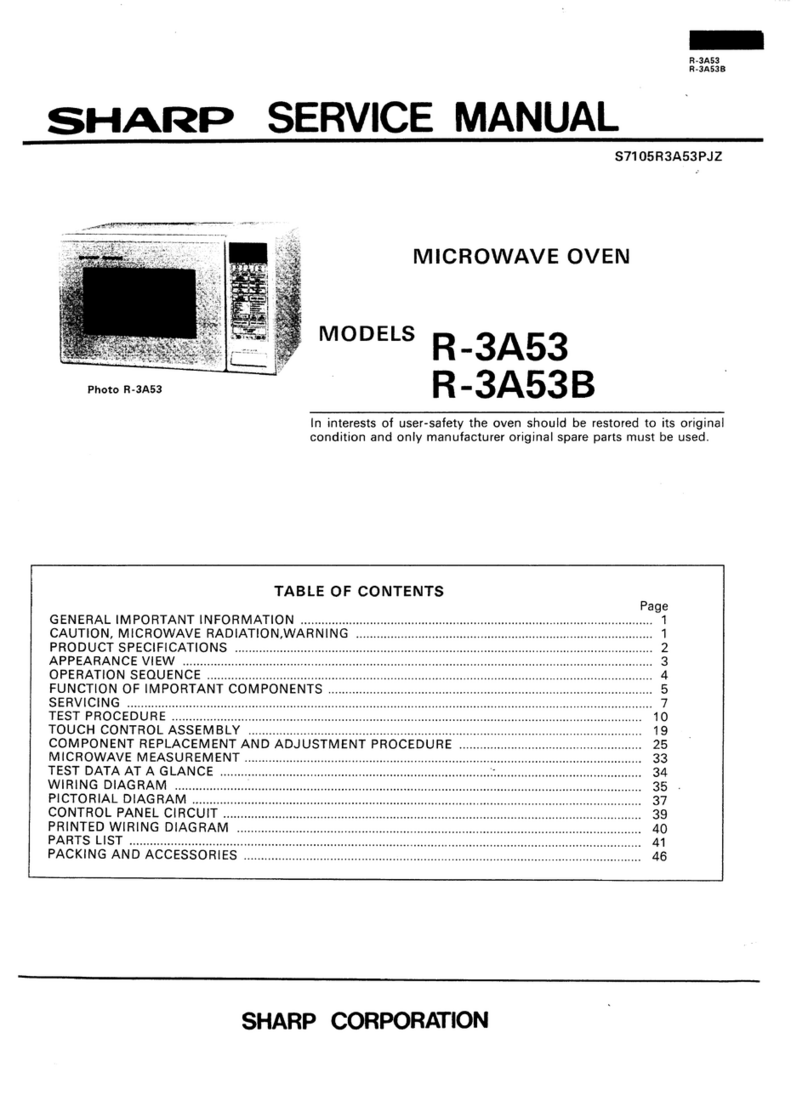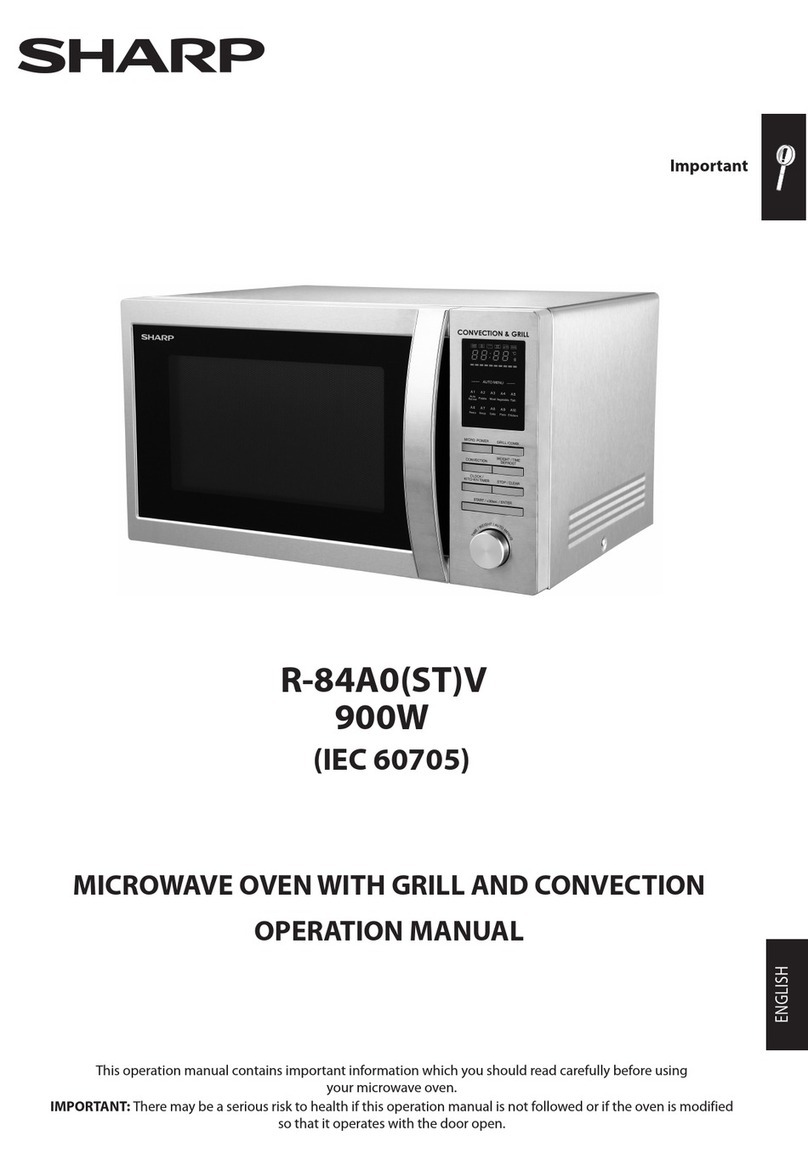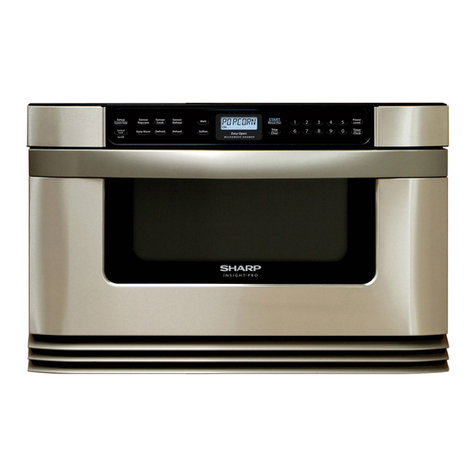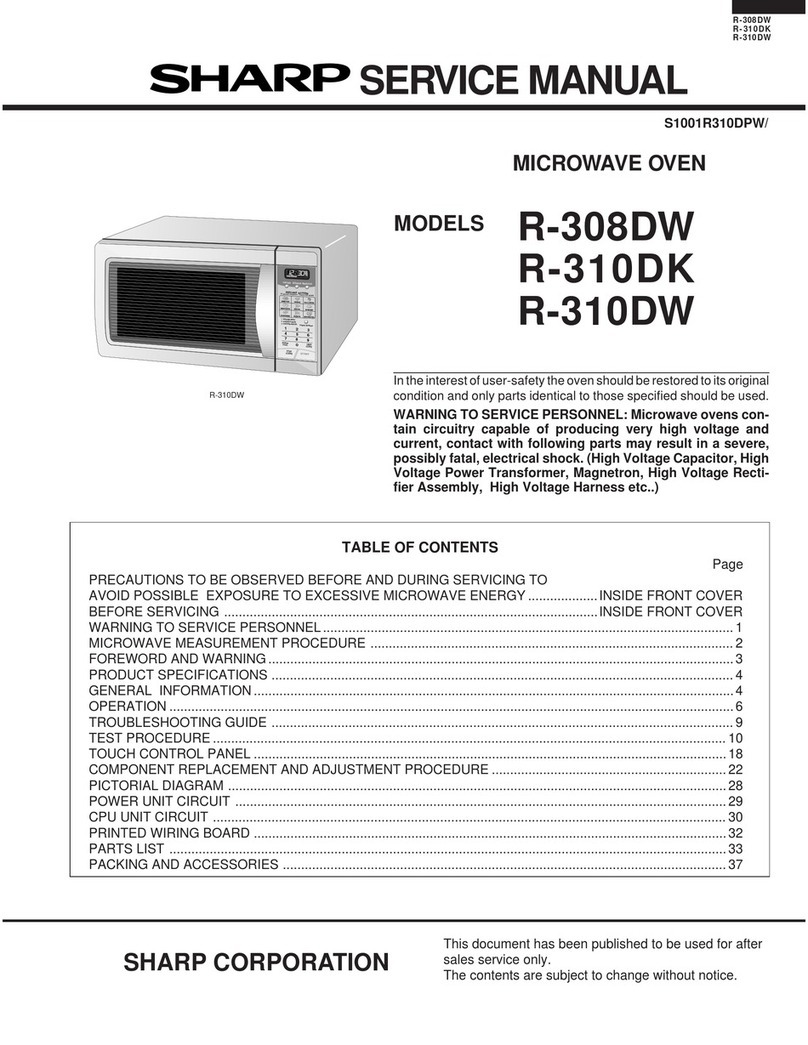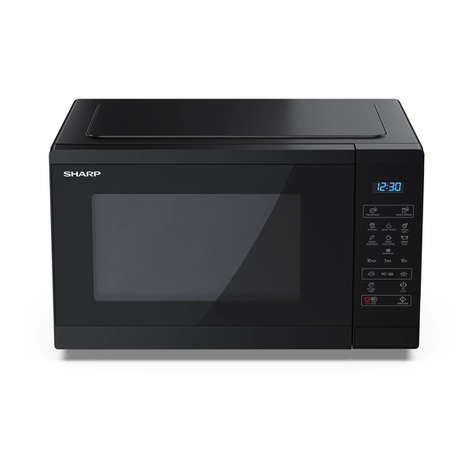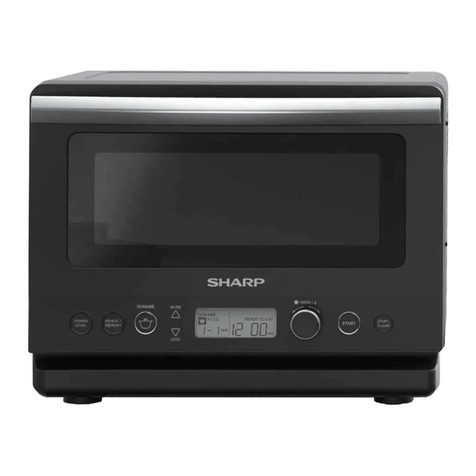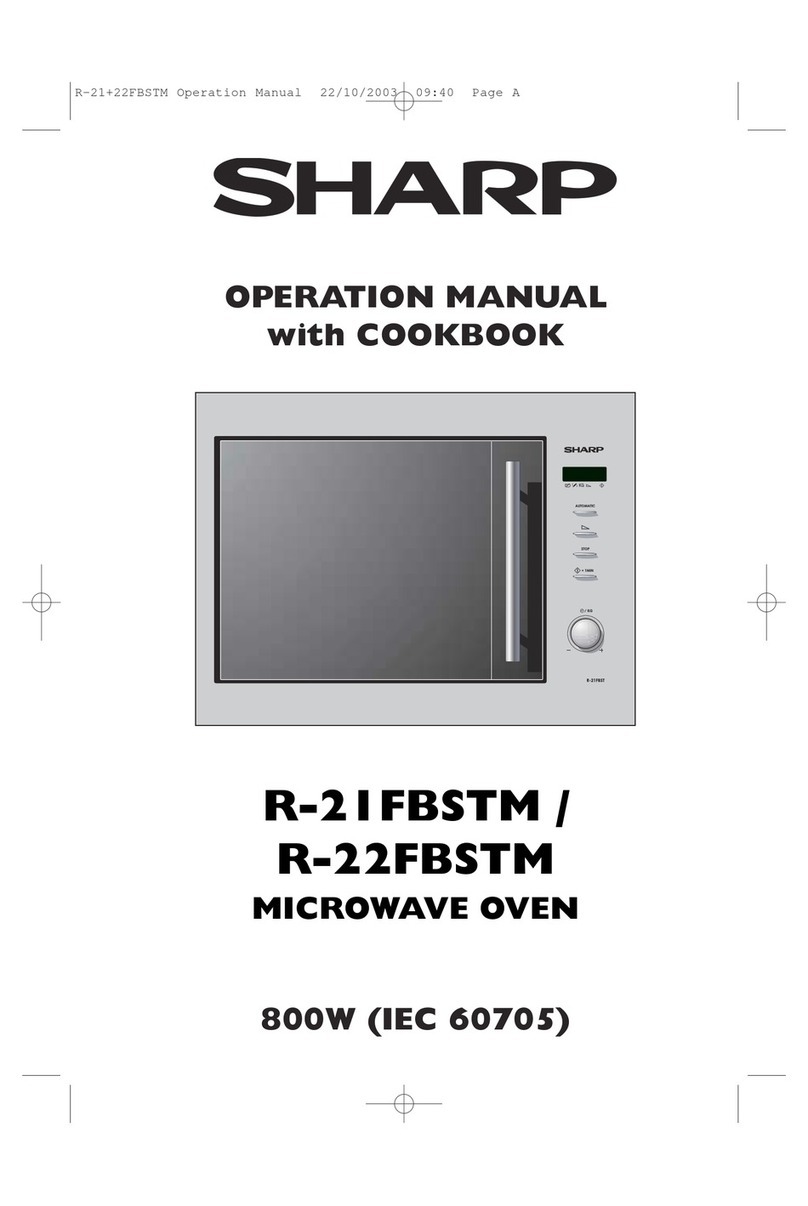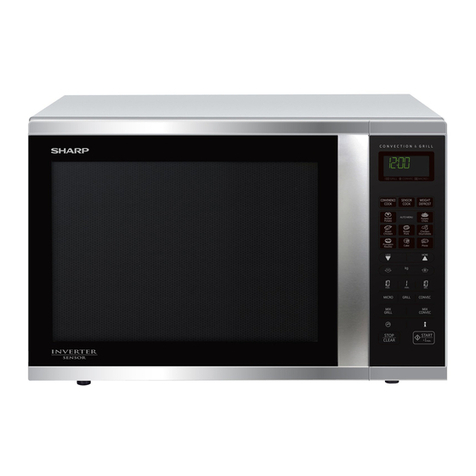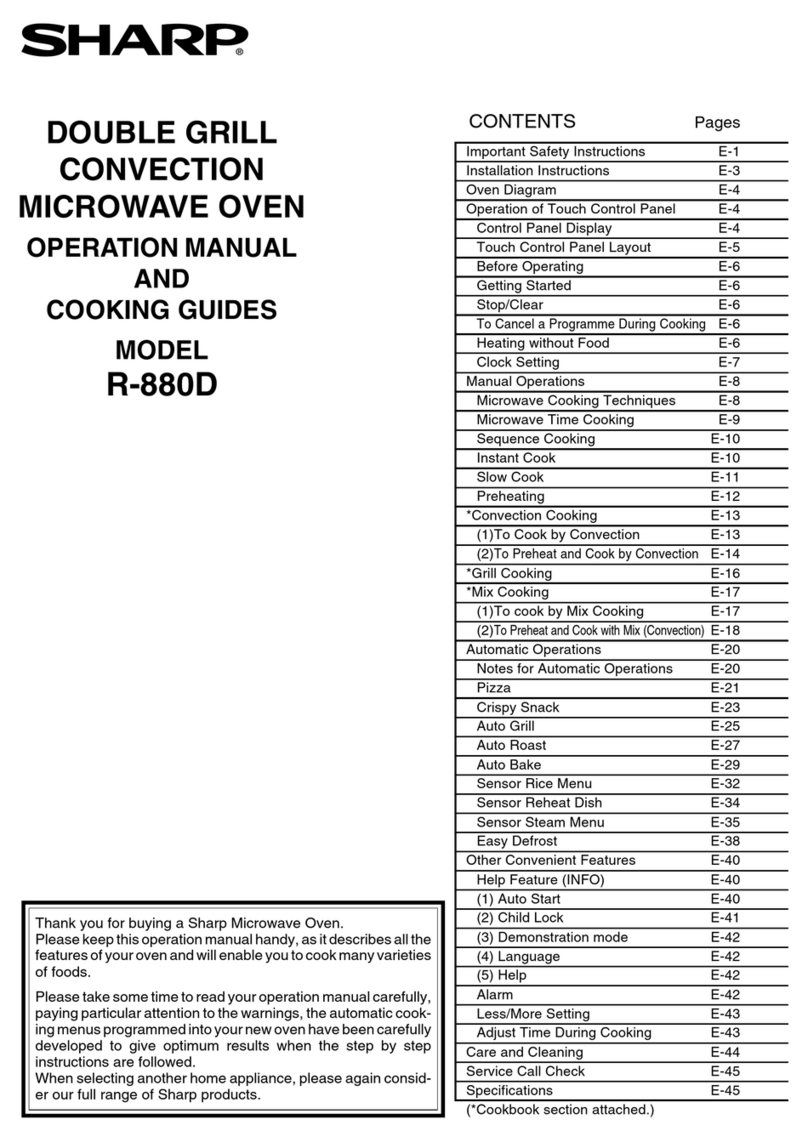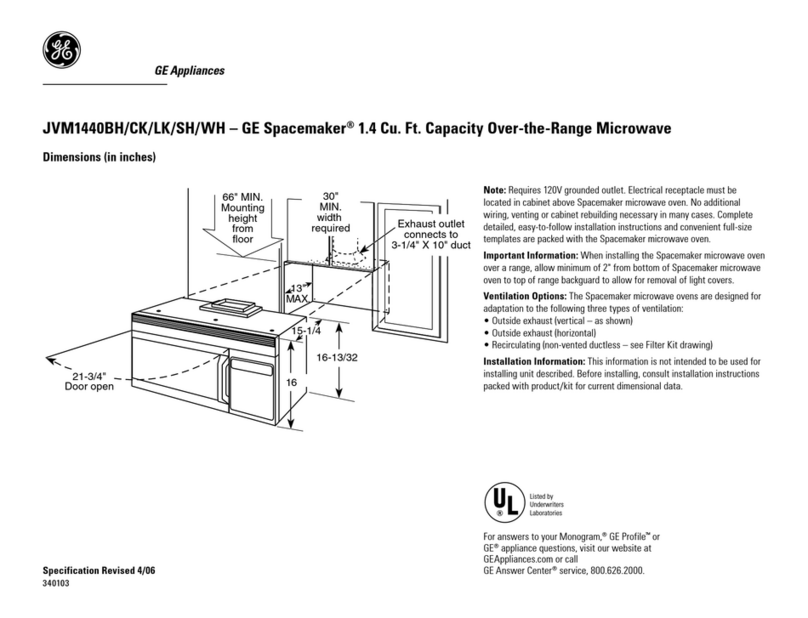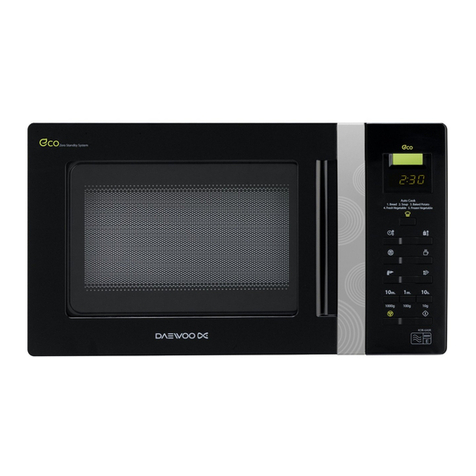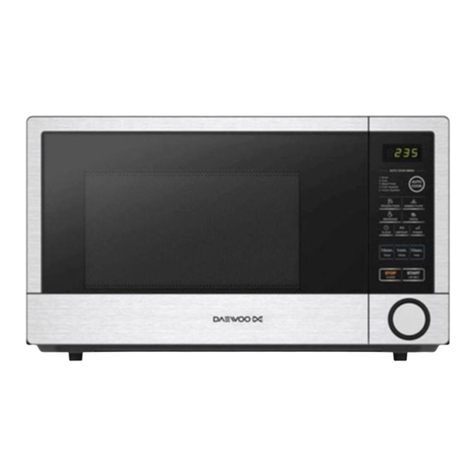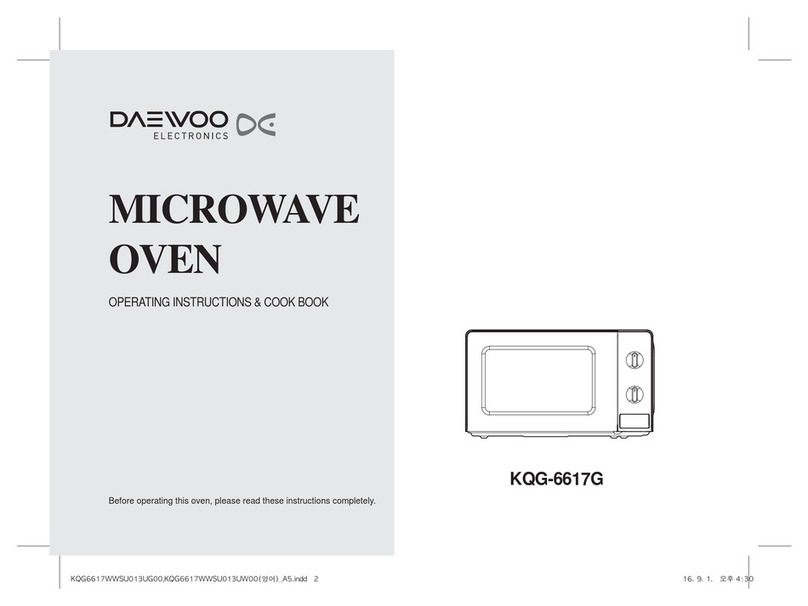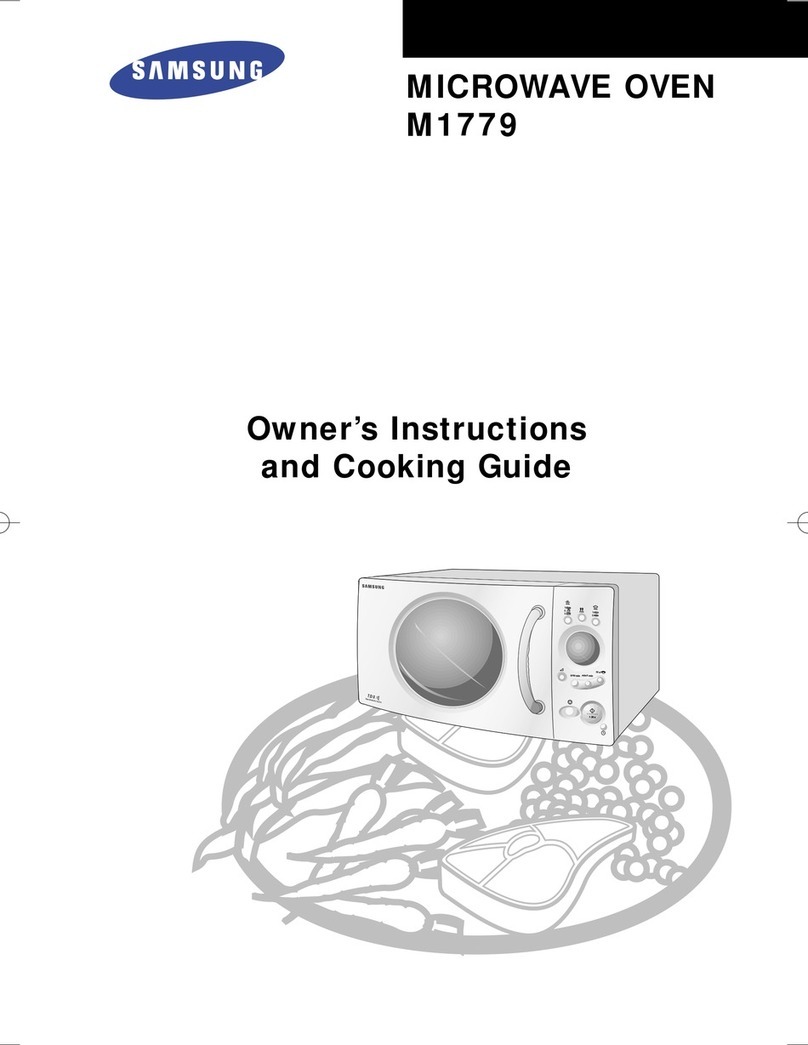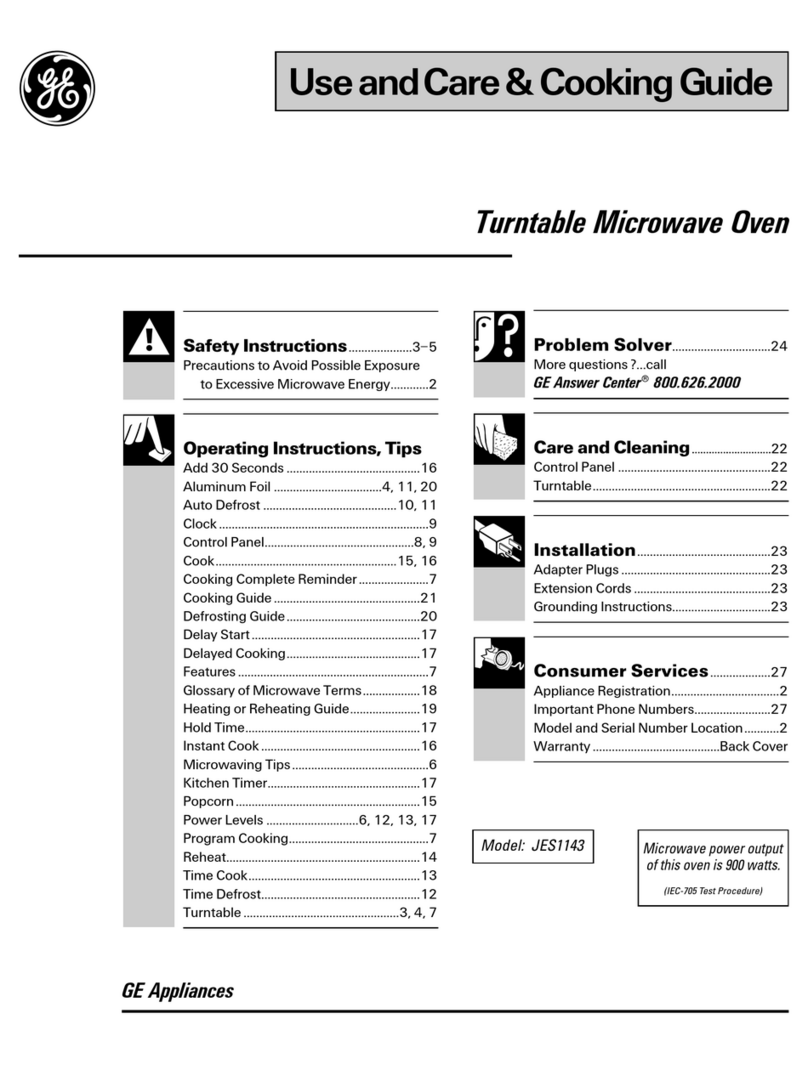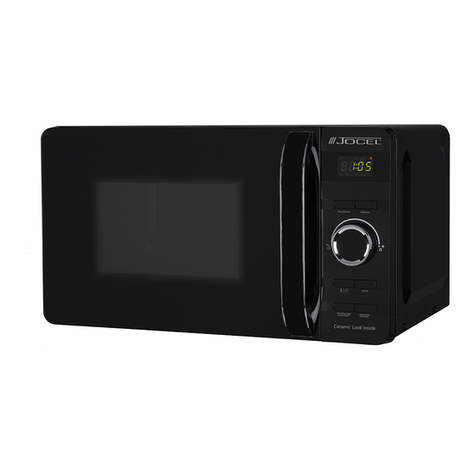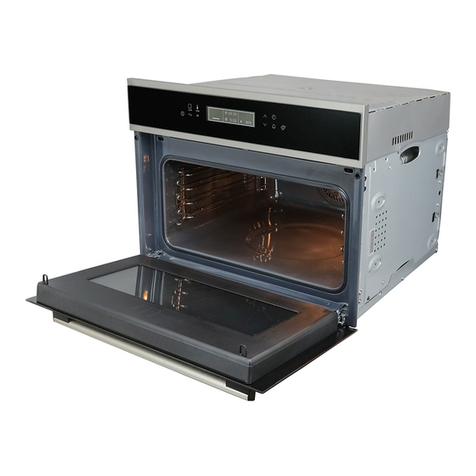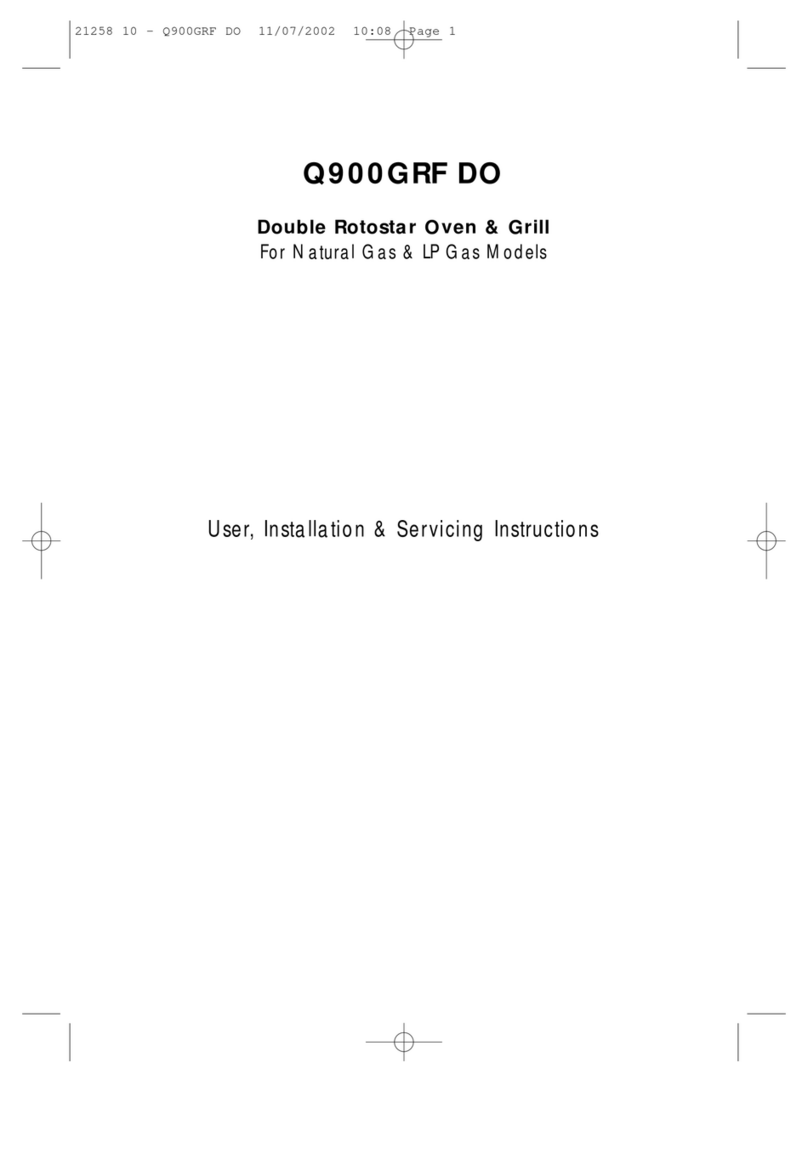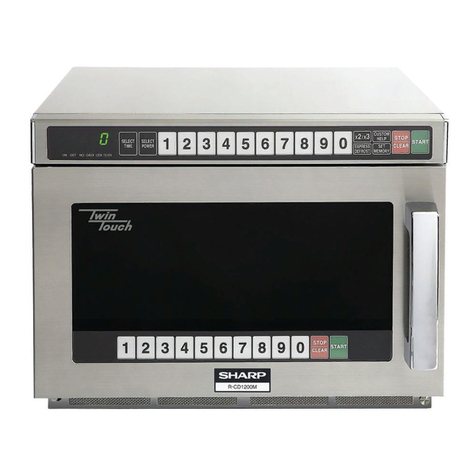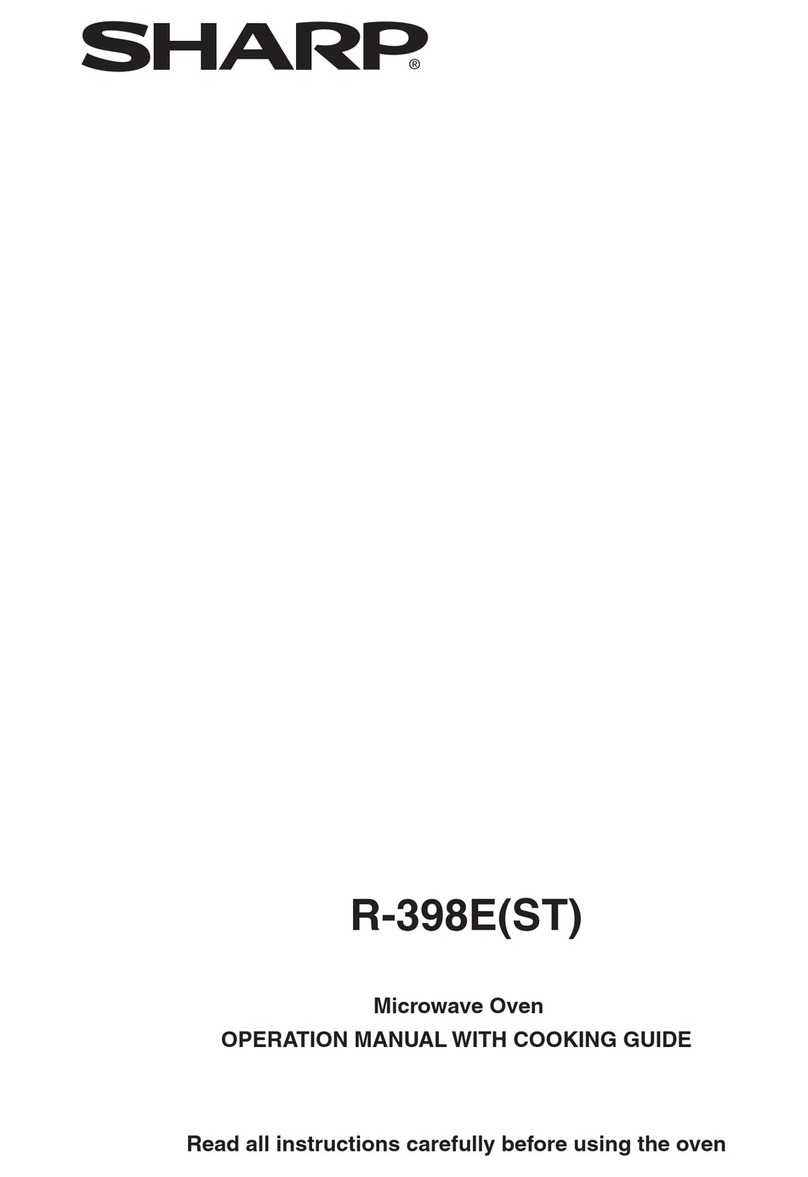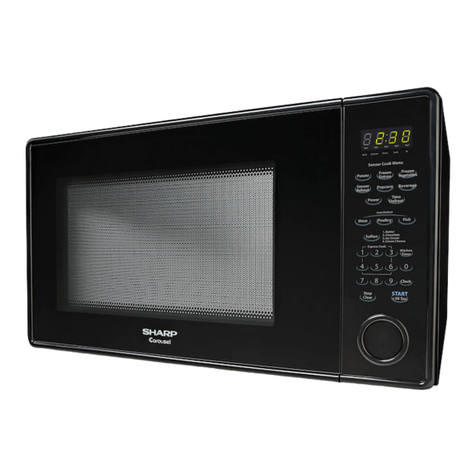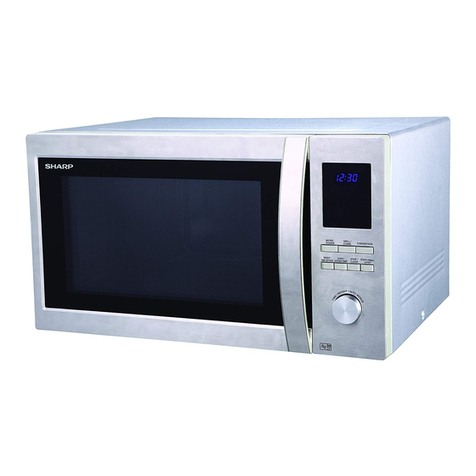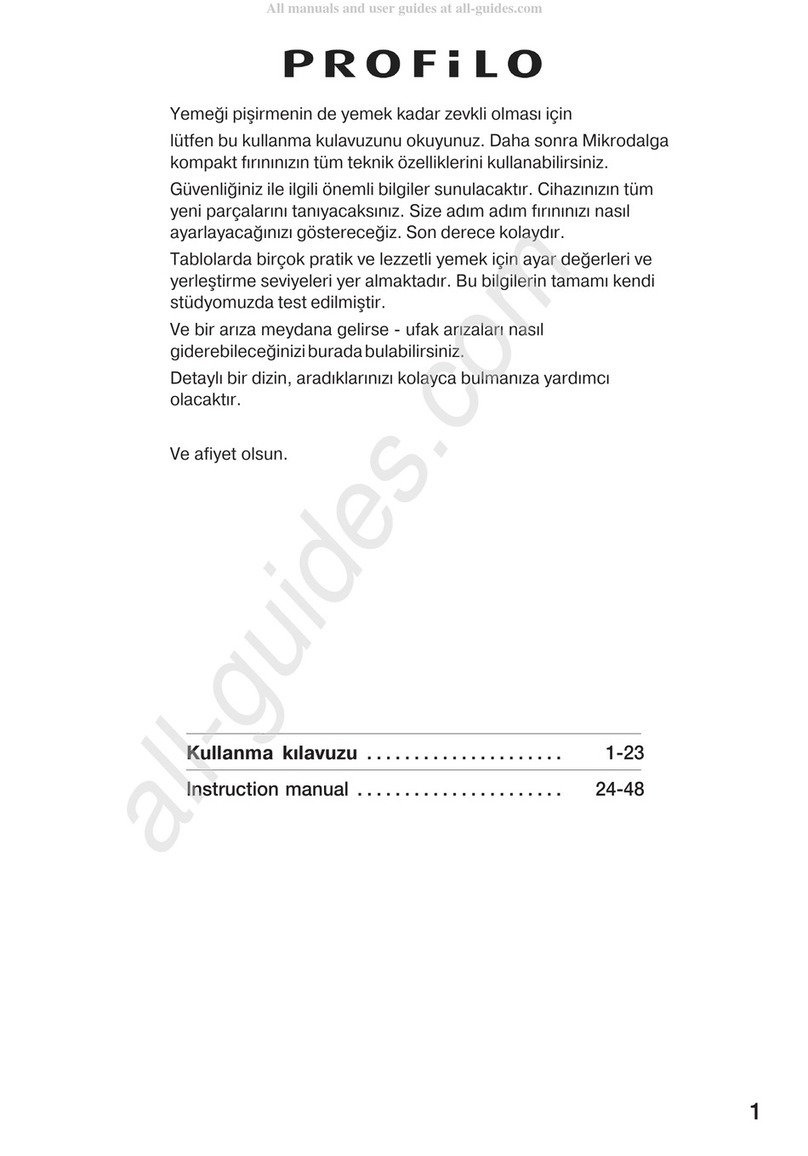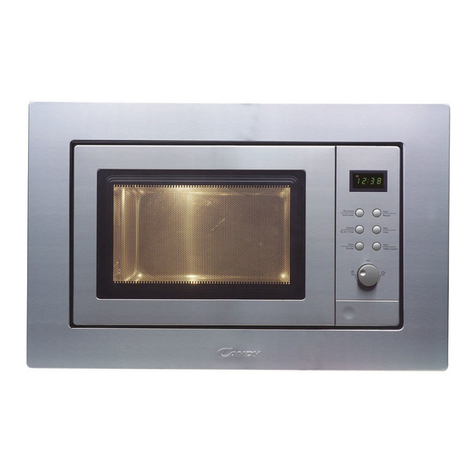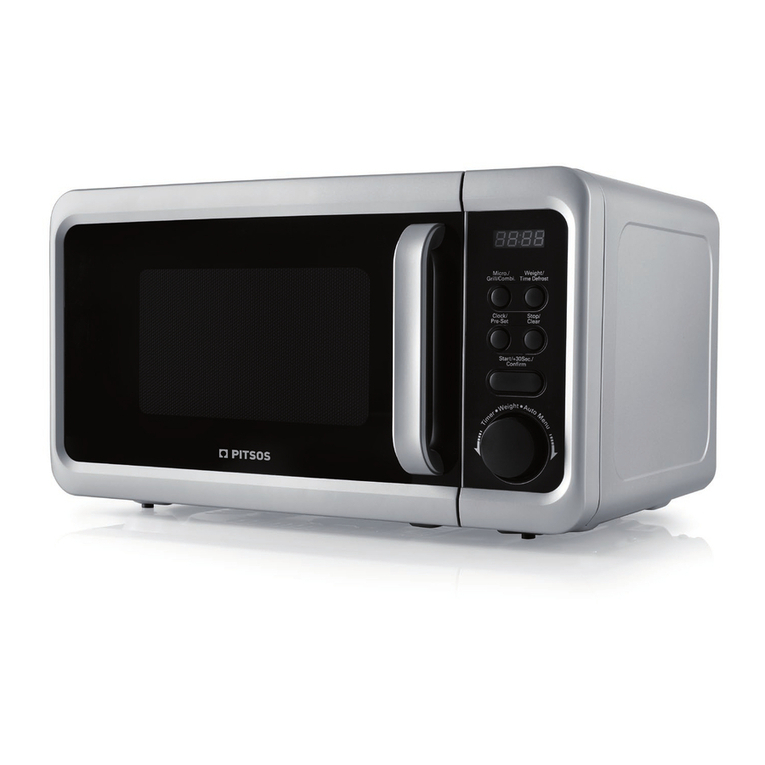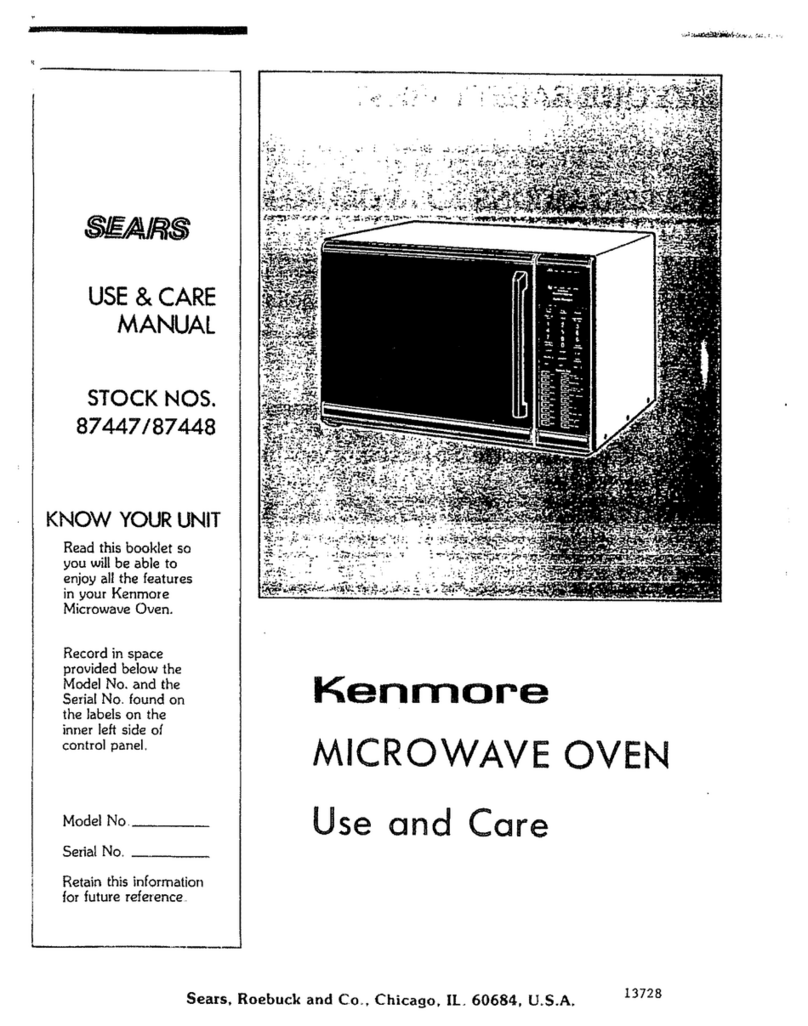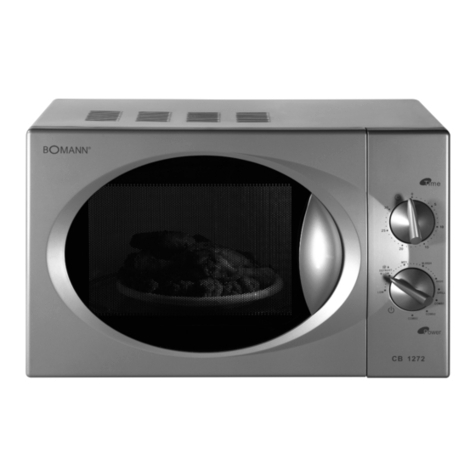7
R-1750
R-1751
R-1752
R-1754
1. The contacts of relays are closed and components
connected to the relays are turned on as follows.
(For details, refer to Figure O-2)
RELAY CONNECTED COMPONENTS
RY1 Oven lamp / Fan motor / Stirrer motor
RY2 Turntable motor
RY3, RY4 Hood fan motor
2. 120 volts A.C. is supplied to the inverter unit and is
convertedinordertopowerofthemagnetronbythehigh
frequency switching power circuit. The frequency is
approx. 27 _40 KHz.
3. The filament winding voltage of H.V. transformer heats
the magnetron filament and the H.V. winding gives a
high voltage approx. 2 KV to activaite a voltage doubler
circuit.Thenapprox.4KVpeakvoltagepowerissupplied
to the magnetron cathode terminal.
4. The microwave energy produced by the magnetron is
channelled through the waveguide into the cavity feed-
box, and then into the cavity where the food is placed to
be cooked.
5. Upon completion of the cooking time, the inverter unit,
oven lamp, etc. are turned off, and the generation of
microwaveenergyisstopped.Theovenwillreverttothe
OFF condition.
6.
Whenthedoorisopenedduringacookcycle,themonitor
switch,stopswitch,secondaryinterlockswitchandprimary
interlock switch are activated with the following results.
Thecircuitstothestirrermotor,thecoolingfanmotor,the
turntable motor, and the inverter unit are de-energized,
and the touch screen displays the time still remaining in
the cook cycle when the door was opened.
7. Themonitorswitchiselectricallymonitoringtheoperation
of the secondary interlock switch and primary interlock
switch and is mechanically associated with the door so
that it will function in the following sequence.
(1) When the door opens from a closed position, the
primary interlock switch and secondary interlock
switch open their contacts, and then the monitor
switch contacts close. And contacts of the relay
(RY1) remain closed.
(2) When the door is closed from the open position, the
monitor switch contacts first open and the stop
switch contacts open, and then the contacts of the
secondary interlock switch and primary interlock
switch close. And contacts of the relay (RY1) open.
If the secondary interlock switch and primary interlock
switch fail with their contacts closed when the door is
opened, the closing of the monitor switch contacts will form
ashortcircuitthroughthemonitorfuse,secondaryinterlock
switch,primaryinterlockswitchand relay(RY1)causingthe
monitor fuse to blow.
VARIABLE COOKING
When Variable Cooking Power is programmed, the 120
volts A.C. is supplied to the inverter unit which is operated
bythecontrolunit.Microwavepoweroperationisasfollows:
The oven can be set for any of 11 power levels: 0% to
100%(HIGH).Thevariablecookingpower less than 40% is
programmedat the ratioofON time andOFFtimewithin 32
sec./ cycle time base.
CONNECTION BETWEEN POWER SETTING AND ON/
OFF TIME OF INVERTER UNIT.
OUTPUT POWER SETTING ON TIME OFF TIME
Power 100%
Power 90%
Power 80%
Power 70% Continue operation
Power 60%
Power 50%
Power 40% 26 sec. 6 sec.
Power 30% 22 sec. 10 sec.
Power 20% 16 sec. 16 sec.
Power 10% 8 sec. 24 sec.
Power 0% 0 sec. 32 sec.
Note: The ON/OFF time ratio does not correspond with
the percentage of microwave power, because
approx. 3 seconds are needed for heating of the
magnetron filament.
SENSOR COOKING CONDITION
Using the Sensor cooking function (See sensor cooking
menus),thefoodiscookedwithoutfiguringtime,powerlevel
or quantity. When the oven senses enough steam from the
food,itrelaystheinformationtoitsmicroprocessorwhichwill
calculatetheremainingcookingtimeandpowerlevelneeded
for best results. When the food is cooked, water vapor is
developed.Thesensor“senses”thevaporanditsresistance
increasesgradually.Whentheresistancereachesthevalue
setaccordingtothemenu,supplementarycookingisstarted.
Thetimeofsupplementarycookingisdeterminedbyexperi-
ment with each food category and input into the LSI.
An example of how sensor works: (BAKED POTATOES)
1. Potatoes at room temperature. Vapor is emitted very
slowly.
2. HeatPotatoes.Moistureandhumidityisemittedrapidly.
You can smell the aroma as it cooks.
MICROWAVE
MICROWAVE
AH SENSOR
